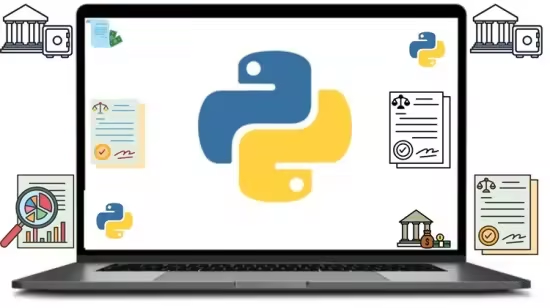
Published 9/2025
MP4 | Video: h264, 1280×720 | Audio: AAC, 44.1 KHz, 2 Ch
Language: English | Duration: 6h 4m | Size: 2.28 GB
Credit Risk Scorecard Modeling: Step-by-Step Guide to Building & Validating Risk Models Using Python
What you’ll learn
Understand the fundamentals of credit risk modeling and scorecard development
Utilize advanced Python libraries (like Pandas, Scikit-learn, NumPy, and Matplotlib) for data manipulation, model building, and visualization
Develop credit risk scorecards using practical, real-world techniques
Learn data preparation in depth
Learn the process flow in model development, validation and calibration step by step from scratch
Implement essential modeling methods such as logistic regression for predicting default probabilities
Preprocess, clean, and analyze credit data to create robust predictive models
Validate and evaluate the performance of their models with industry-standard metrics
Requirements
Zeal and enthusiasm for learning a new skill
Computer with internet connection
Access to a computer with Python installed (preferably with libraries like Pandas, NumPy, and Scikit-learn)
Basic understanding of credit risk concepts (e.g., Probability of Default, Credit Scorecards)
Familiarity with Python programming (basic knowledge of Python syntax, variables, and data structures)
Access to a computer with Jupyter Notebook installed
Description
This intensive course is designed to equip participants with practical skills in building and validating credit risk models using Python, focusing on the development and implementation of scorecards. This course combines theory with hand-on applications for developing, validating and calibrating the credit risk scorecards.In this course you will learn fundamental credit risk concepts, step-by-step methodologies for developing behavioral scorecards using python, Implementing statistical techniques essential for credit scoring which includes logistic regression, Gini Coefficient, Receiver Operating Characteristics (ROC) analysis, Rank Ordering, Weight of Evidence (WOE), Fine and Coarse Classing. In this course you will also acquire skills in handling and analyzing data, dealing with missing data, outliers, and variable transformations to prepare data for modeling. You will also understand various techniques which are applied for internal validation of scorecards, including back-testing, benchmarking and calibration.Throughout the course, you will learn to leverage powerful Python libraries and frameworks, such as Pandas, Scikit-learn, NumPy and Matplotlib, for credit risk modeling. These tools will help you ensure robustness, accuracy, and efficiency in developing and validating credit risk scorecards.This course is perfect for credit analysts, risk managers, financial controllers and all finance professionals involved in risk assessment who wish to enhance their modeling skills using python and develop a through understanding of scorecard development and validation.
Password/解压密码www.tbtos.com
转载请注明:0daytown » Developing Credit Risk Scorecard using Python